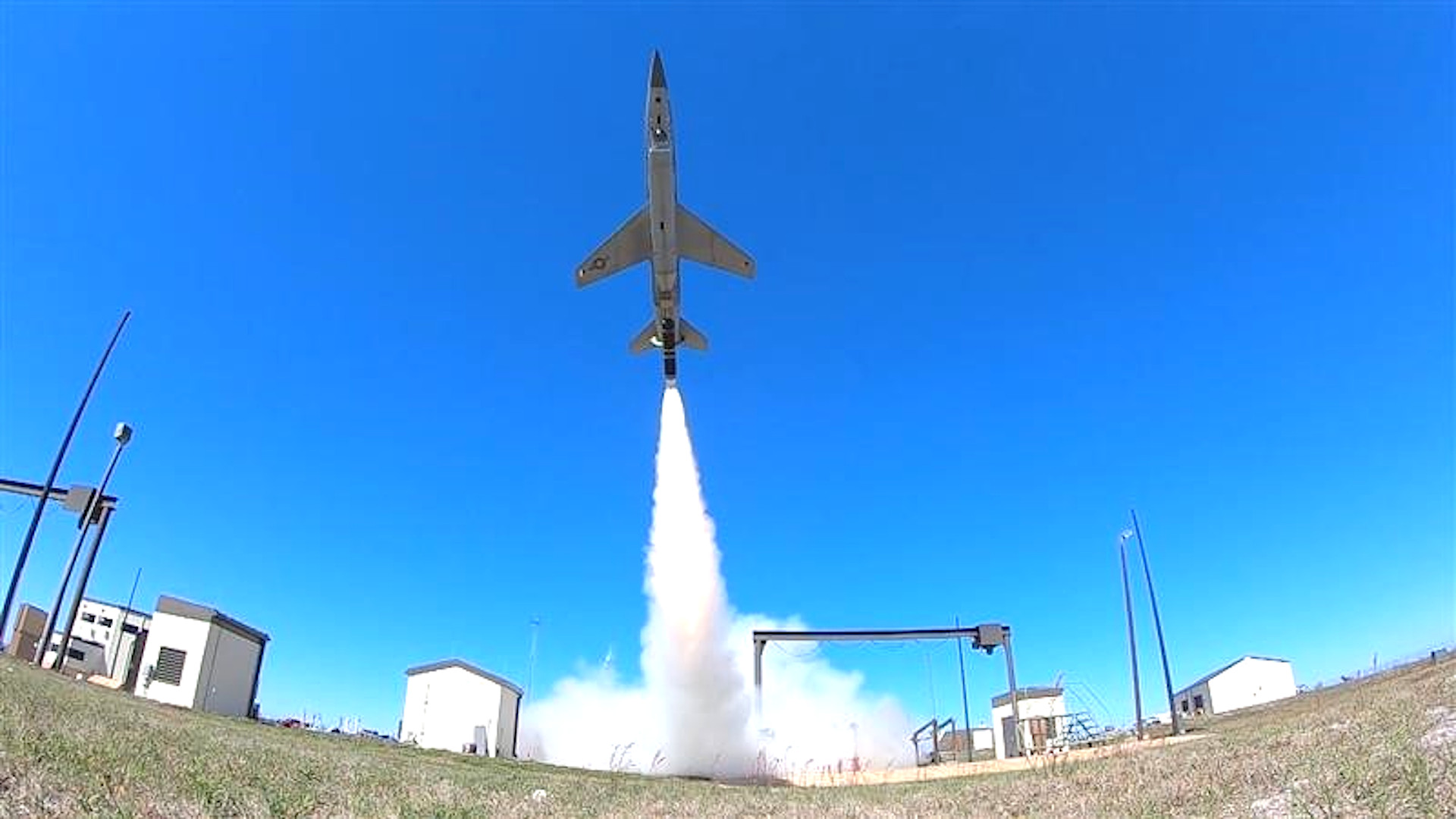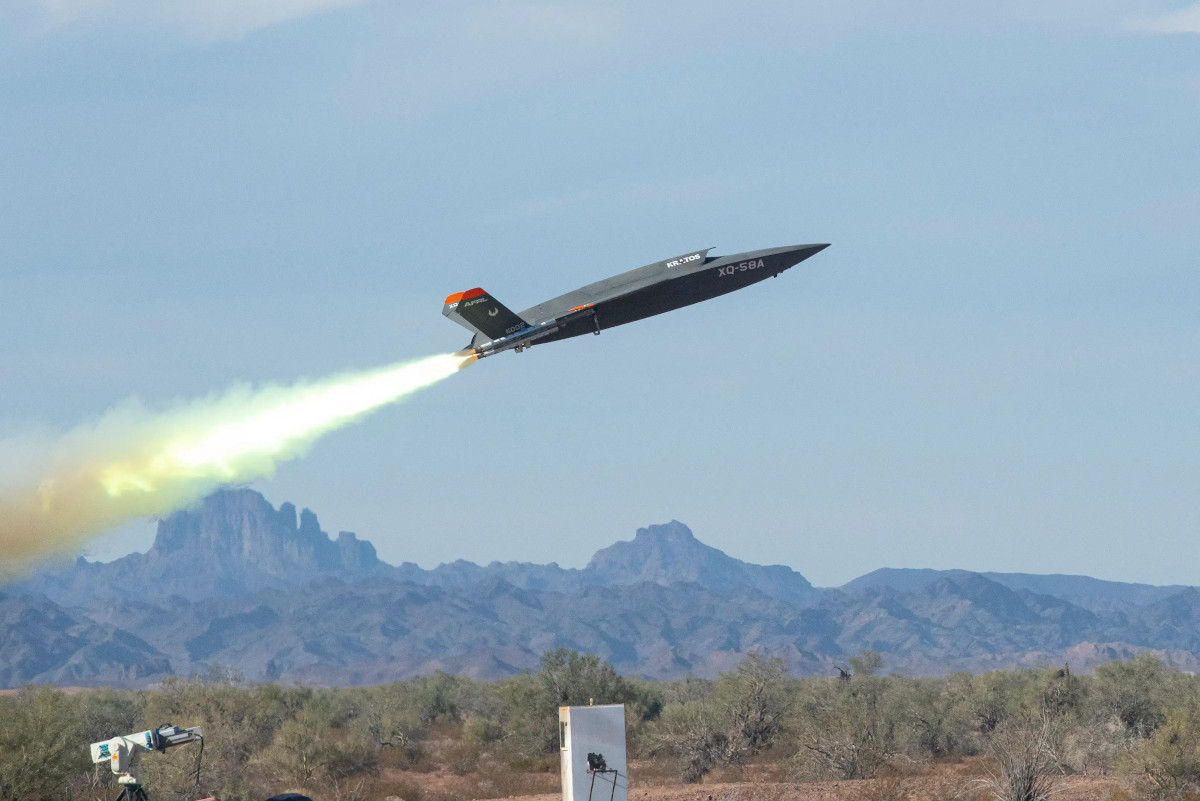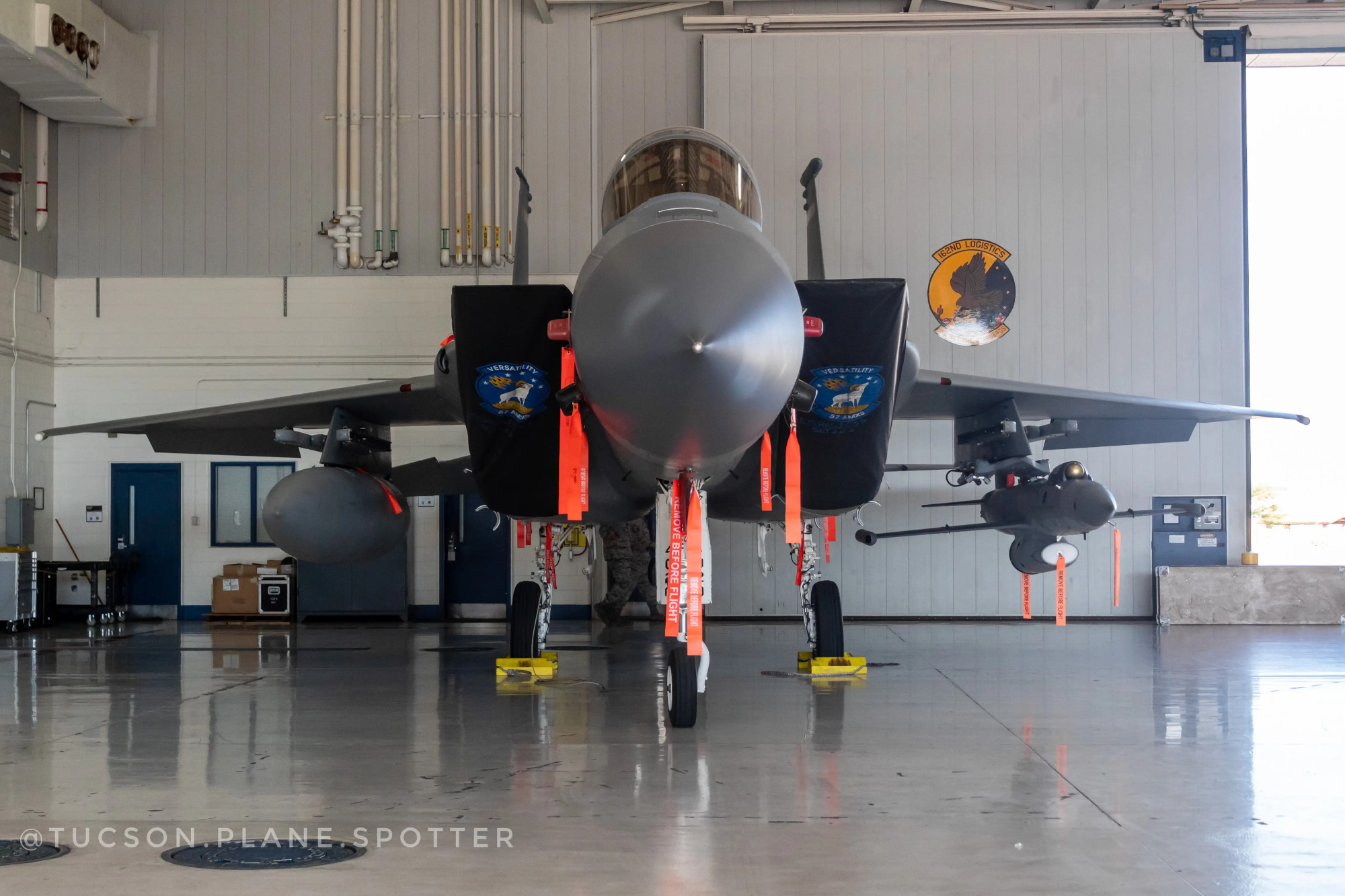The U.S. Air Force says that it has conducted the first flight test of an initial version of the artificial intelligence-driven “computer brain” it is developing under the Skyborg program using a Kratos UTAP-22 Mako unmanned aircraft. Kratos, along with Boeing and General Atomics, are on contract to start delivering new drones soon to support this project. Skyborg is centered on crafting a system of systems that will be able to fly networked “loyal wingman” type drones, as well as fully autonomous unmanned combat air vehicles, or UCAVs.
The Air Force Life Cycle Management Center (AFLCMC) at Wright-Patterson Air Force Base in Ohio announced the successful completion of the flight test, which it said lasted approximately two hours and 10 minutes, on May 5, 2021. The flight had occurred on April 29, with personnel launching the UTAP-22 carrying the Skyborg Autonomy Core System (ACS) from Tyndall Air Force Base in Florida. Tyndall has immediate access to extensive over-water ranges in the Gulf of Mexico and is already a regular launch point for ground-launched Kratos BQM-167A Skeeter target drones, from which the UTAP-22 is derived.

The Air Force has described this test as Milestone 1 within what is now calling the Autonomous Attritable Aircraft Experimentation (AAAx) campaign. Attritable refers to drones and other systems that are not, by definition, expendable, but are designed to be low-cost enough to be employed in environments where the risk of them being lost would preclude the use of more expensive and sensitive ‘exquisite’ platforms.
“We’re extremely excited for the successful flight of an early version of the ’brain‘ of the Skyborg system. It is the first step in a marathon of progressive growth for Skyborg technology,” Air Force Brigadier General Dale White, the service’s Program Executive Officer for Skyborg, as well as for Fighters and Advanced Aircraft, said in a statement. “These initial flights kickoff the experimentation campaign that will continue to mature the ACS and build trust in the system.”
“Through this operational experimentation campaign, AFRL is leaning forward to get early engagement with the warfighter to deliver a suite of full-mission autonomy on a relevant timeline,” Brigadier General Heather Pringle, the Skyborg Technology Executive Officer and head of AFRL, added in her own statement. “AFRL is proud to be developing this force multiplier for the U.S. Air Force with our partners at PEO Fighters and Advanced Aircraft and the 96th Test Wing.”
AFLCMC and the Air Force Research Laboratory (AFRL), working together, are managing the Skyborg program, which was publicly unveiled in 2019. The 96th Test Wing, which has been assigned the role of lead test unit for the Skyborg program, is based at Eglin Air Force Base, also in Florida.
The Air Force said the main goal of this flight test was to evaluate the Skyborg ACS’s ability to carry out various “foundational behaviors necessary to characterize safe system operation,” according to an official press release. “The ACS demonstrated basic aviation capabilities and responded to navigational commands, while reacting to geo-fences, adhering to aircraft flight envelopes, and demonstrating coordinated maneuvering. It was monitored from both airborne and ground command and control stations.”

In short, this flight was conducted primarily to ensure that the Skyborg ACS was capable of safely controlling the UTAP-22 through a series of relatively basic maneuvers within a defined area. The term “geo-fences” refers to virtually defined boundaries around a certain area, which, depending on the nature of the technology in use, can be set in various ways, including simply by boxing off a zone with GPS coordinates. The geo-fences, in this case, would have been intended to place limits on where the drone was supposed to operate, with the Skyborg system autonomously changing its course to keep inside this specified airspace.
The Air Force did not say why the UTAP-22 was used for this particular test. In December 2020, the service announced it had awarded contracts to Kratos, as well as Boeing and General Atomics, to build drones to carry the Skyborg systems, but the assumption had been that the company would supply additional examples of the stealthy XQ-58A Valkyrie to support this work. XQ-58As have already been supporting work related to the Skyborg program, as part of AFRL’s Low-Cost Attritable Aircraft Technology (LCAAT) project, as well as testing conducted as part of the Air Force’s Advanced Battle Management System (ABMS) networking and advanced technology initiative. Over a dozen companies, in total, are also providing various subsystems to the Air Force in support of Skyborg.

However, the UTAP-22 is a proven and affordable platform, and is the only loyal wingman-type drone currently on the international market. It has been extensively tested in this role, the mission set that the Skyborg program is focusing on initially, since at least 2015. That year, a U.S. Navy Mako flew networked together with a U.S. Marine Corps AV-8B Harrier jump jet.

Last year, pictures also emerged on a UTAP-22, with Navy markings, in an air-launched configuration underneath the wing of an Oregon Air National Guard F-15C Eagle fighter jet. In April, the Air Force also disclosed that KC-135R aerial refueling tanker equipped with a new communications suite had received data from a Mako during a recent test.

The Mako could simply have been the most readily available platform suitable for this initial test. It is not at all uncommon to see the use of surrogates in testing to help prove out these kinds of autonomous capabilities.
It’s also worth noting that, as of April, the Air Force was only known to have taken delivery of three XQ-58As, though a dozen more were in various stages of production at that time. Per the contracts awarded last year, Kratos, as well as Boeing and General Atomics, are supposed to deliver their initial batches of drones for Skyborg testing this month. Boeing is supplying a version of the Airpower Teaming System (ATS) drone it developed for Australia, while General Atomics says it has tested its stealthy Avenger in relation to its Skyborg work, though it remains unclear if that company will deliver examples of that design or a derivative thereof to the Air Force.
The Skyborg program has stressed from the beginning that the computer brain and associated systems it is developing are intended to be platform-agnostic and readily adaptable to different aircraft. There has even been talk about some of these autonomous capabilities eventually making their way into manned aircraft help reduce the workloads of pilots and other aircrew.
The Air Force says that multiple follow-on Skyborg ACS flight tests are already scheduled for the coming months. So, it is possible, if not plausible that this “computer brain” will be flight tested on the other platforms the service is already in the process of acquiring for this program later this year.
Whatever the case, this flight test an exciting step forward for the ambitious Skyborg program, which could revolutionize how the Air Force fights in the air. Skyborg is also just one of a host of programs going on within the Air Force, as well as elsewhere within the U.S. military, focused on advanced autonomous technology together with new developments in unmanned platforms, in the air and down below, including types capable of operating in networked swarms. Artificial intelligence and machine learning are also areas of interest that are only growing across the services.
With the results of the first successful test of the Skyborg “computer brain” now in hand, it will be very interesting to see what new progress the Air Force will make on this project as the year continues.
Contact the author: joe@thedrive.com
